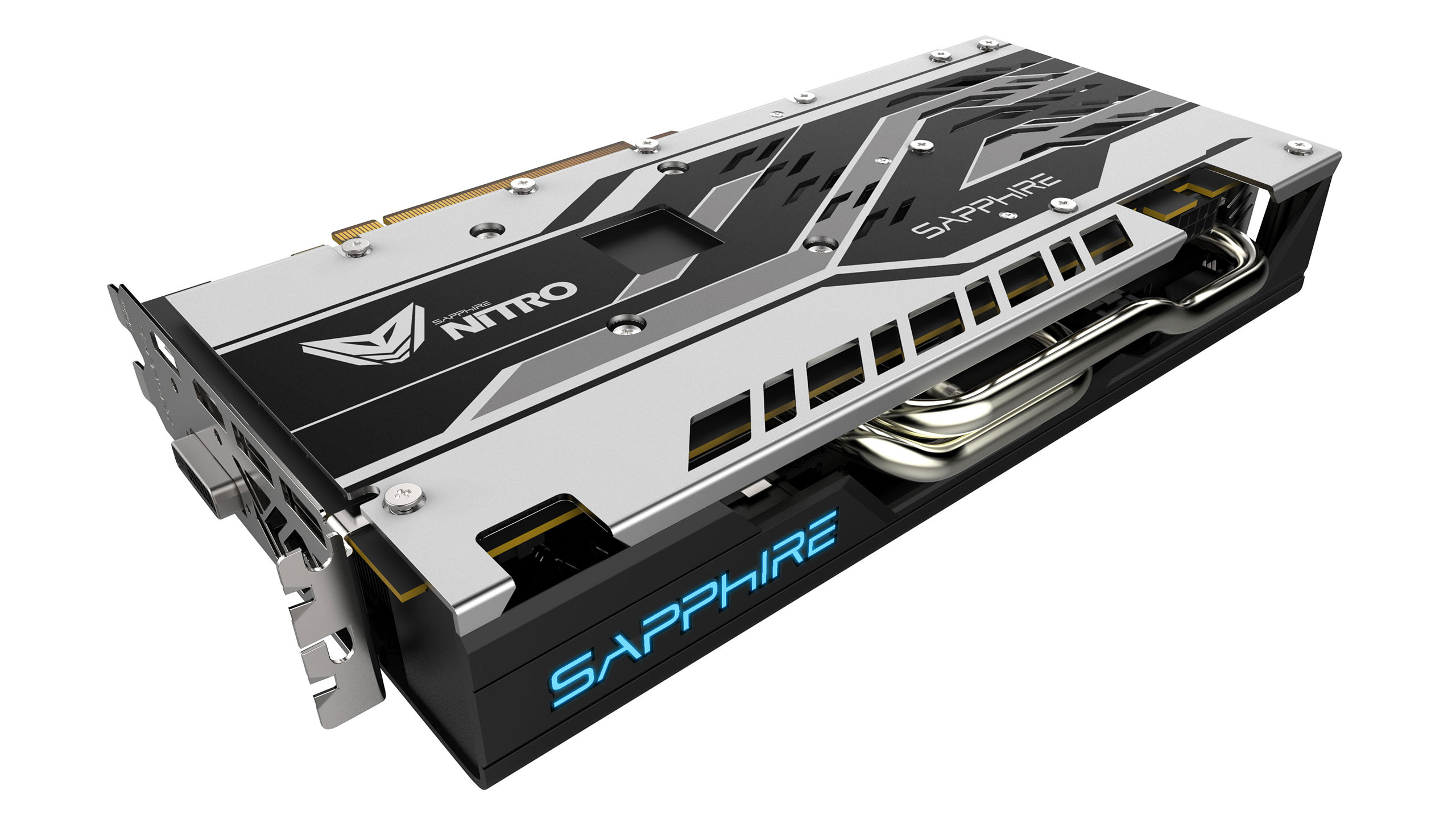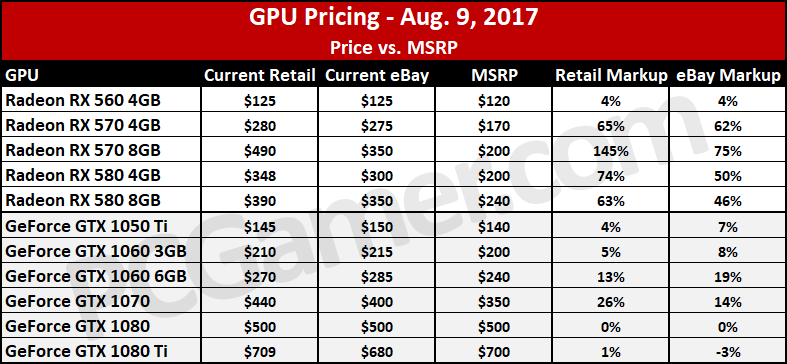Popular cryptocurrency GPUs are finally back in stock, but prices remain inflated
The mining boom is winding down, slowly but surely.

Ethereum, Bitcoin, and other cryptocurrencies created a major spike in graphics card pricing over the past few months—and why not? For a month or so, you could earn up to around $10 per day with a GTX 1080 Ti, $7.50 per day from a GTX 1080, $6 from a 1070, and $5-$6 from the RX 570 and RX 580 cards. The temptation to buy bunches of hardware and invest in mining rigs grabbed many, and the serious miners pretty much bought out every midrange card on the market, and made a serious dent into high-end cards like the GTX 1070.
Thankfully, things have started to calm down, with the profitability of mining dropping by more than half. Now instead of breaking even on hardware purchases in a couple of months, we're looking at closer to a year—possibly more as mining difficulty self-regulates. Of course, Bitcoin's price just set a new all-time high of $3,450, and Ethereum is back up to nearly $300 (with a brief spike to $310), so we're not out of the woods yet.
And into all this we have AMD launching the RX Vega cards. Initial testing using the Frontier Edition showed pretty weak mining performance, but rumors are swirling that graphics card manufacturers have tested cards and reached over double the performance of the RX 580 on Ethereum mining. If that ends up being true, Vega might also be affected by mining demand. But let's not get ahead of ourselves.
Here's the current GPU prices, looking at the least expensive option I could find. I also included eBay prices, to see if there are better deals to be had in the used market. And I have good news, as it looks like demand is dropping, with eBay prices reacting accordingly:

Prices remain inflated on the midrange offerings, particularly on the AMD side, which is remains a veritable no-man's land. Prices are still up by 50 to 100 percent or more, but at least now you can actually buy the cards. Just a few weeks ago, the 570 and 580 were in the $500+ range, which is ridiculous. eBay ends up being a better option for lower prices on all of the AMD GPUs, but you end up with the risk of used hardware—something I wouldn't recommend, particularly as the cards still carry a price premium. I wouldn't be surprised if many of the cards on eBay are from people that purchased the GPUs at MSRP, and now they're just looking to turn a quick profit, but it's impossible to know for certain whether a card has been used for mining or not.
That's a topic that came up several times at AMD's recent RX Vega event. Many wondered if AMD could add some sort of an "hours of use" tracker to the cards to protect people from buying a worn-out card. AMD made non-committal comments, and obviously it's not going to help pre-existing cards. Unfortunately, that means used graphics cards will remain a questionable proposition.
For now, patience remains the best approach to getting a good deal on a graphics card—that or just go for the GTX 1080 or GTX 1080 Ti, which are readily available at MSRP. Give it another month or two (or even three or four) and prices should correct to MSRP, perhaps lower. If you're willing to settle for a lower performance option, the GTX 1060 3GB is only slightly overpriced and remains a capable 1080p gaming card, but long-term I recommend getting something with at least 4GB VRAM, as that's pretty much the new standard. Hopefully by this time next month, the $200-$250 sweet spot will once again be occupied by our favorite options for gaming, the RX 570/580 and GTX 1060 6GB.
The biggest gaming news, reviews and hardware deals
Keep up to date with the most important stories and the best deals, as picked by the PC Gamer team.
Jarred's love of computers dates back to the dark ages when his dad brought home a DOS 2.3 PC and he left his C-64 behind. He eventually built his first custom PC in 1990 with a 286 12MHz, only to discover it was already woefully outdated when Wing Commander was released a few months later. He holds a BS in Computer Science from Brigham Young University and has been working as a tech journalist since 2004, writing for AnandTech, Maximum PC, and PC Gamer. From the first S3 Virge '3D decelerators' to today's GPUs, Jarred keeps up with all the latest graphics trends and is the one to ask about game performance.


